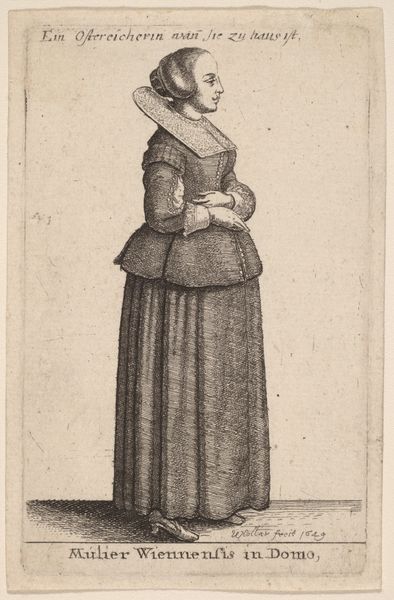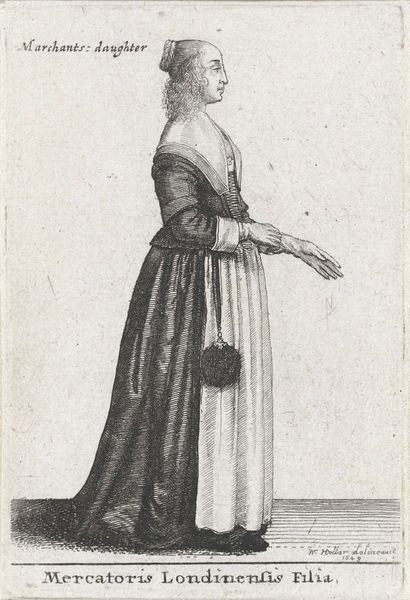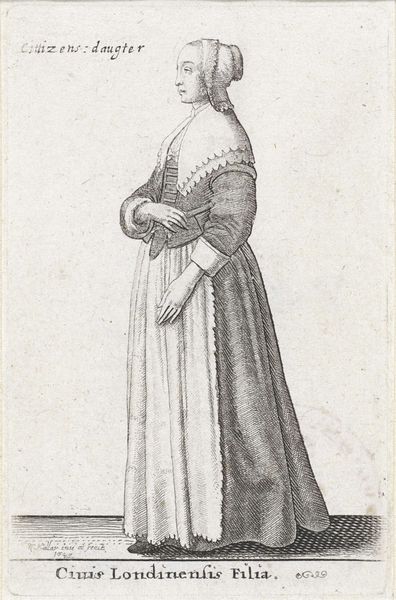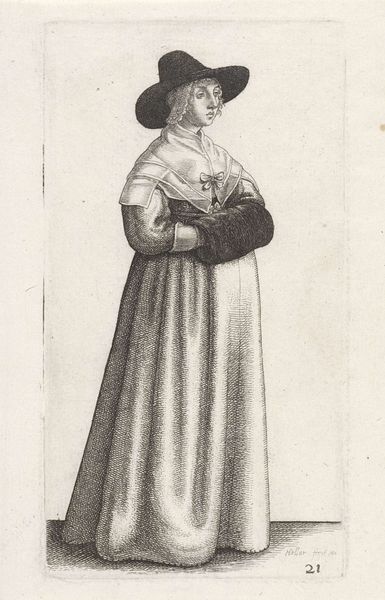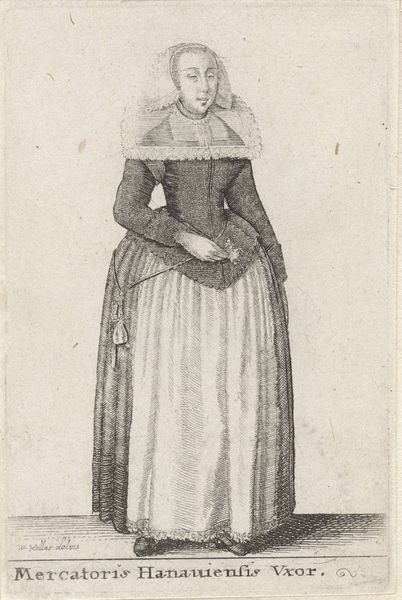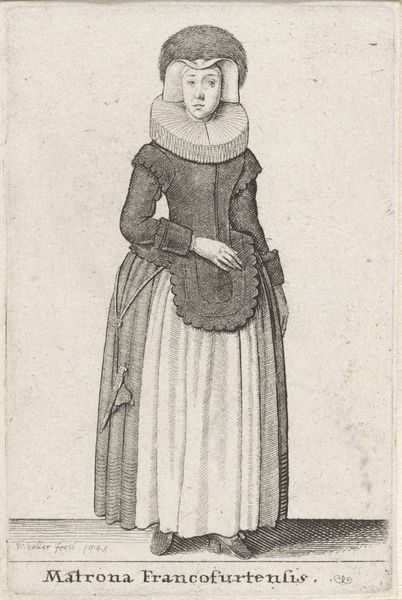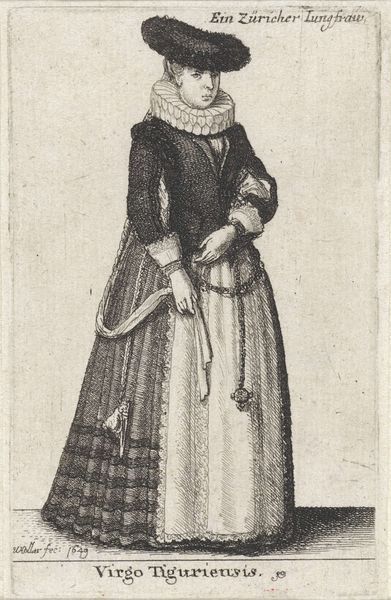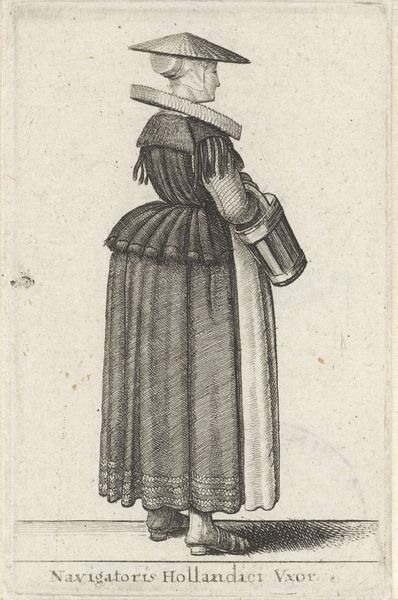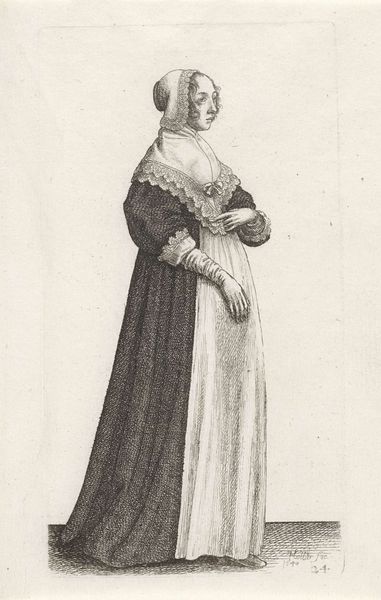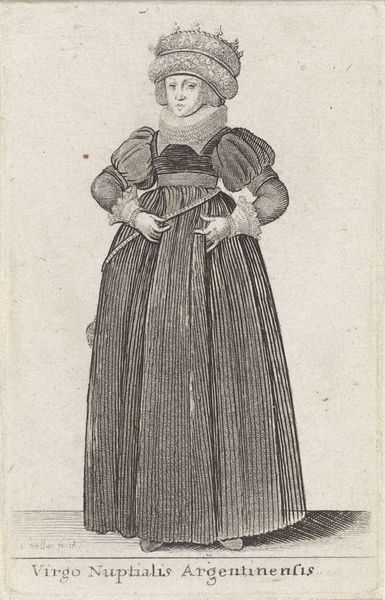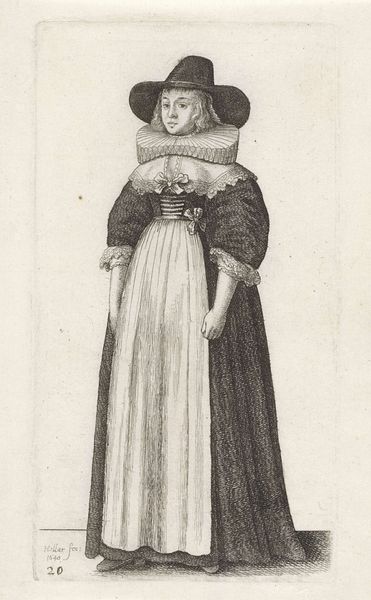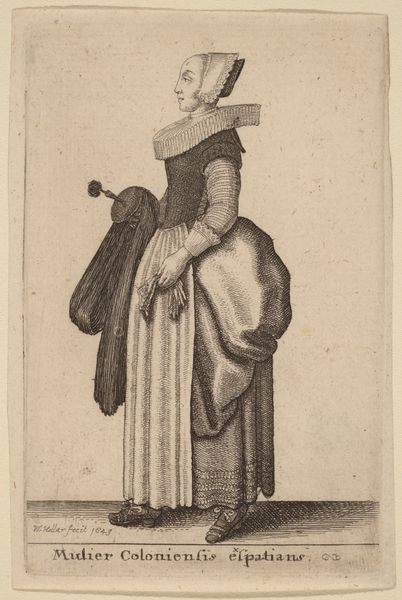
print, engraving
#
portrait
#
baroque
# print
#
figuration
#
engraving
Dimensions: height 96 mm, width 63 mm
Copyright: Rijks Museum: Open Domain
Curator: Here we have "Mulier Moguntiana", an engraving from 1643 by Wenceslaus Hollar, currently residing at the Rijksmuseum. Editor: She strikes me as rather austere. There's a certain... containedness, wouldn't you say? The stark lines, the almost rigid pose. Curator: Absolutely. Let's delve into the socio-political context. The title suggests she’s a woman from Mainz, then a city embroiled in the throes of the Thirty Years' War. Hollar, exiled due to his Protestant beliefs, captures more than just a portrait. Editor: Yes, but look at the incredible detail achieved through the engraving technique! Notice how Hollar modulates the tones by varying the density and direction of his etched lines. See it in the rendering of her fur cap, the crispness of her ruff, and the sheen implied on her dress? Curator: And those details of attire are very telling. The high ruff, the layers, all speak to status, but also constraint. What does it mean for a woman's body to be so enclosed during such tumultuous times? This image really prompts questions around gender and social expectations within that war context. Editor: I see that. Still, from a formal standpoint, that ruff is just a masterclass in creating texture. Observe its circularity, framing her face, which is in profile. The composition directs our gaze so powerfully, it adds to that air of authority that you pointed out. Curator: Indeed. Considering that prints like this would have been circulated widely, this engraving functions as a cultural document. How would women like this subject have experienced and navigated conflict, social unrest, and their roles within it? That's something to reflect on. Editor: An interesting viewpoint. I am stuck on the artistry within the line work, but seeing your perspective allows a bigger vision into that particular era in Germany. Curator: Thanks for your vision as well. It allows for better insights into the importance and place for artworks and portraits in human culture.
Comments
No comments
Be the first to comment and join the conversation on the ultimate creative platform.

